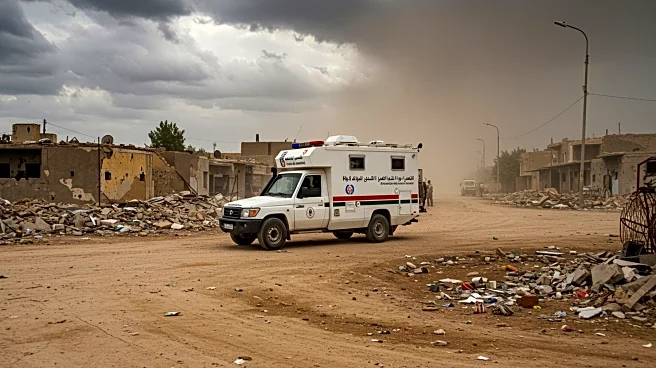What's Happening?
Hamas has been reported to use a vehicle marked with the emblem of the international humanitarian aid organization World Central Kitchen (WCK) to target Israeli Defense Forces (IDF) soldiers in Gaza. According to the IDF, the vehicle, which was involved in a targeted airstrike last week, was confirmed by WCK to have no affiliation with their organization. The IDF stated that the vehicle posed a threat to troops, leading to the airstrike that resulted in the death of five armed fighters. This incident highlights the ongoing challenges faced by humanitarian missions in conflict zones, where aid efforts can be manipulated for military purposes.
Why It's Important?
The misuse of humanitarian aid vehicles by Hamas underscores the complexities and dangers of delivering aid in conflict zones like Gaza. Such actions not only endanger the lives of aid workers and military personnel but also undermine the credibility and safety of genuine humanitarian efforts. This exploitation can lead to increased scrutiny and restrictions on aid operations, potentially limiting the delivery of essential supplies to civilians in need. The incident also raises concerns about the manipulation of humanitarian aid by oppressive regimes, which can use such resources to sustain aggressions rather than support the welfare of the population.
What's Next?
In response to these challenges, there is mounting international pressure on Israel to allow the United Nations and other humanitarian organizations full access to Gaza. This access is crucial to ensure that aid reaches those in need without being diverted for military purposes. The IDF, through its Coordination of Government Activities in the Territories (COGAT), is expected to continue working with international aid organizations to prevent the exploitation of humanitarian efforts for terrorist objectives. The situation calls for increased vigilance and cooperation among international bodies to safeguard the integrity of humanitarian missions.
Beyond the Headlines
The incident involving the fake WCK vehicle highlights the ethical and operational dilemmas faced by humanitarian organizations in conflict zones. It raises questions about the responsibility of aid groups to verify the use of their emblems and the potential consequences of their misuse. Additionally, it underscores the need for robust mechanisms to protect humanitarian workers and ensure that aid is not weaponized in conflicts, which could have long-term implications for international humanitarian law and the conduct of warfare.











